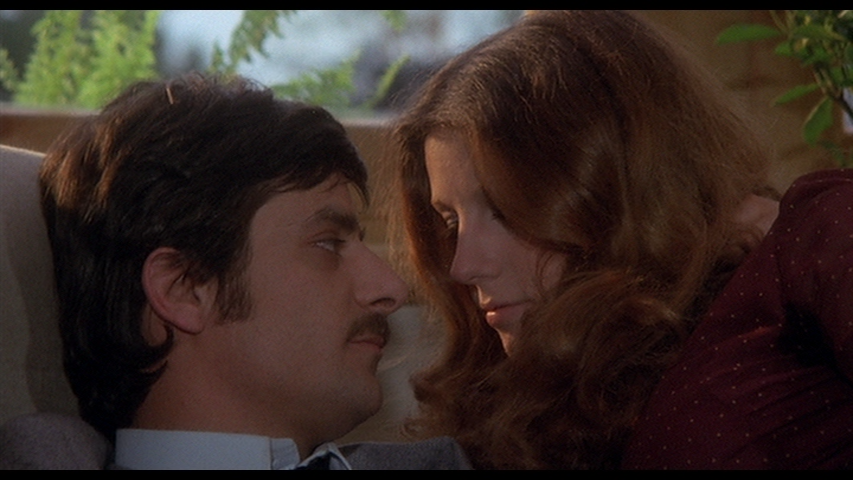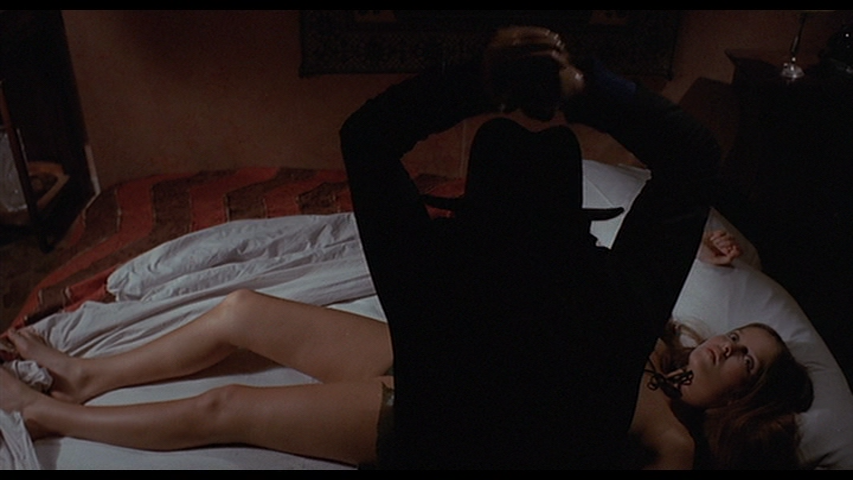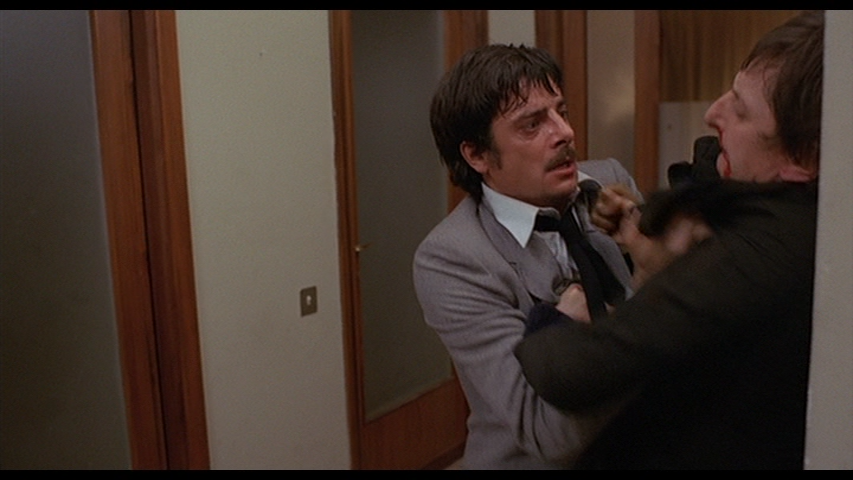Last Updated on October 6, 2020 by rob
Inspector Tellini (Giancarlo Giannnini) investigates a series of grisly murders in which women are paralysed by scorpion venom before being mutilated. As the bodies pile up the gruesome nature of the investigation proves hard to bear and Tellini relies on his wife Anna (Stefania Sandrelli) for support. The discovery of a blackmail plot involving the victims seems like a breakthrough but when the chief suspect is killed all the clues point to an exclusive health clinic run by Laura (Claudine Auger). But as Tellini closes in the killer turns his attention to Tellini’s beloved wife.
Black Belly of the Tarantula is a really good giallo with a likeable and convincingly vulnerable leading man, a decent plot, effectively staged murder scenes and a real nail-biter of a climax. I liked it a lot and I found it interesting how much this differs from the Dario Argento films of the same decade which have come – for better or worse – to define giallo cinema. BB shows that while still incorporating the same elements it’s possible to emphasise different aspects and still come up with something equally satisfying. Cavara’s film feels more like a psychological drama in which Tellini’s loving wife (beautiful Stefania Sandrelli) is our hero’s bulwark against the fearsome stresses of his day job.
The film keeps cutting back to the pair in their tiny apartment. Tellini confides to his wife that he doesn’t think he’s up to the job. She reassures him. They fool around, make love. It’s the kind of thing you’ve seen in a dozen other giallos yet Giannini and Sandrelli have a chemistry that turns what could have been by the numbers stuff into the beating heart of the movie. The scenes with these two when combined with Ennio Morricone’s wistful, melancholy score have a marvellously sensual and optimistic vibe. In such moments it feels as if the movie is actively pushing back against the horrors its hero – and we the viewer – have witnessed. And the horrors are convincingly nasty with the needle full of tarantula venom being plunged into the necks of its screaming victims a nicely unnerving image.
Director Cavara may not trade in the kind of baroque visual style of Argento but he does a pretty good job generating unease with scenes of the killer stalking his victims and when Tellini is lured away so the killer can strike at his girl it’s a genuinely fearful sequence that ensues. The film also does well by its female cast. Stefania Sandrelli is the kind of comely, understanding wife we’d all like to come back to, Claudine Auger is effectively shifty as the spa boss with something to hide and the two Barbara’s – Bouchet and Bach – make for agreeably decorative victims with the latter the beneficiary of a neat little plot twist that effectively muddies the water as regards the killer’s sex. The briskly paced story has a couple of well handled subplots involving a mysterious blackmailer and the vengeance seeking husband of one of the murder victims which end up sending Tellini’s enquiries in new directions.
Another bit of business in which Tellini stumbles across a cocaine smuggling ring and gets a deadly tarantula flung at him for his trouble supplies a few shudders. That our hero seems a bit out of his depth is a risky gamble which could have backfired with the audience (you don’t often find sensitive, troubled ‘tecs in giallos – although Eros Puglielli’s Eyes of Crystal (2004) was a memorable exception) but Giannini’s performance never feels wimpy or self-pitying. We understand the stability that his wife represents in his life. That’s why, when the killer invades Tellini’s home and attacks Anna (a plot twist foreshadowed in an earlier humiliation after Tellini discovers he’s been filmed by the blackmailer making love to his wife as the film is run for the entire detective squad!) the impact feels so personal that Tellini understandably goes beserk, deliberately setting his gun aside and then beating the killer to a pulp with his bare fists. Director Cavara cleverly interwines this mayhem with flashback images of the dead women, giving the sequence the impact of a catharsis, an outpouring of rage on behalf of the killer’s victims and our tormented hero.



